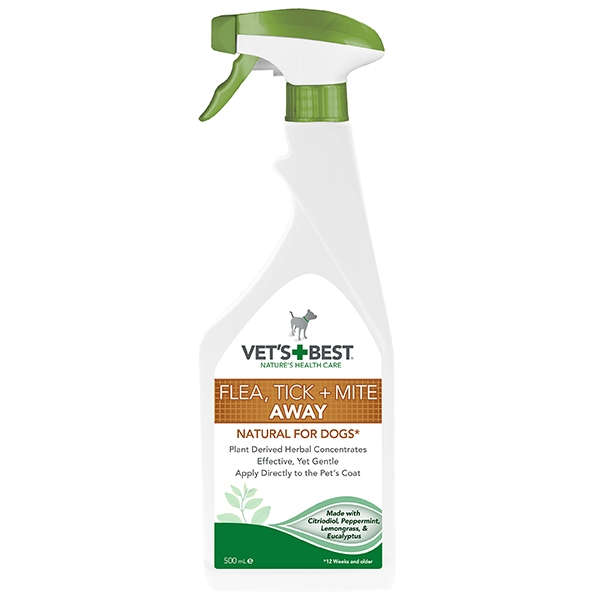The Harvest Mite (Trombicula Autumnails) is, as you might think, a species of mite that frequently infect hosts during the autumn, hence the name “Harvest”. They are attracted to warm-blooded animals, and a dog's body is the perfect place for them to live and breed.
Harvest Mites are very small, reddish-brown in colour, and can be difficult to see with the naked eye. They are parasites that attach themselves to a dog's skin and feed on its blood. They can cause considerable itching and irritation, especially around the face, neck and ears.
.jpg)
Like other parasites, Mites, such as Ticks and Fleas, require a blood meal to survive and evolve through their life cycles. However, they do this a little differently from their peers. Once a female Harvest Mite has laid an egg, the egg remains dormant for six days, after which, the non-feeding pre-larvae emerges.
Within a week, the pre-larvae grow into larvae and congregate with others in large groups, usually in long grass, low bushes or plants. While still in the larvae stage, the Harvest Mite is parasitic, it needs a warm-blooded animal or host in order to feed and develop into adulthood.
Any mammal will do but the most common victims are your dog or your cat. Once a hand, foot or paw comes in contact with a particular area of grass, bush or plant that is infested, the larvae will swarm onto your four-legged friend.
Once they have attached to the host, the larvae commonly called ‘chiggers’, pierce the skin and inject a powerful digestive enzyme that degenerates the host's skin cells. This is done through a tube formed by hardened skin cells called a stylostome. The larvae aim for thinly haired areas of the body as it is easier for them to pierce the skin here.
The Chiggers will continue to feed like this for 2 – 3 days. In this time it will also grow 3 – 4 times its original size. Their appearance is reddish, orange in colour and can be seen on the skin of your dog or cat. After feeding on you, or your dog for a few days the Harvest Mite will drop off and complete their life cycle. In the adult stage, the mites do not feed on blood but instead eat vegetation.

If you think your dog may have Harvest Mites, take a closer look at their skin. Look for reddish-brown mites around the face, neck and ears. If you see them, there is a good chance your dog has been bitten and needs treatment.
Severe itching should be dealt with by a vet as it can be indicative of other skin conditions, such as allergies. If left untreated, the Harvest Mites can cause considerable irritation, inflammation and even infection.
There are a number of ways to treat Harvest Mites on dogs. One of the most effective is to use an over-the-counter spray or dip that will kill the mites. You can also use a flea and tick shampoo or topical treatment.
Regularly checking your dog for ticks and other parasites is an important part of keeping them healthy and free from disease. Taking steps to prevent Harvest Mites, such as using insect repellent when walking your dog in areas where they may be present, will help to protect your pet from these little creatures.
Harvest Mite infestations in cats, dogs and humans are usually found in late summer and autumn, as this is when Harvest Mite larvae need to feed on a blood meal to develop into adults.
You may suspect that your cat or dog has an infestation if they develop a sudden onset of scratching or chewing. The scratching and chewing will be caused by the intense itching of Harvest Mite bites.
Sudden, intense itching is a common symptom among many hosts of ectoparasites, so the symptoms alone are not a conclusive diagnosis of Harvest Mites. However, if your pet develops these symptoms during this specific time of year there is a good chance that Harvest Mites are the culprit.
If you suspect your dog or cat to be a host to Harvest Mites, have the issue correctly diagnosed by your veterinarian. Depending on how many mites are present, your vet may need to examine by taking a skin scraping and viewing it under a microscope.

Unfortunately, there are currently no products licensed specifically for the treatment of Harvest Mites in cats and dogs. Some flea treatments are effective in treating harvest mites when applied correctly. Using treatment with a good residual strength will help keep Harvest Mites away from your cat and dog.
If you think your cat or dog is at risk of infestation by Harvest Mites, then your vet will be able to advise you on which treatments would be the most suitable.
Another way to prevent Harvest Mite larvae from attaching to your pet is by modifying their routine.
Harvest Mites are only active during the day, so you can reduce the risk by limiting exposure in areas where they may be. Harvest Mite larvae can be found on lawns and in areas of longer grass and shrubbery. Limiting the amount of time your pets spend laying out in the garden may be a good way to stop the possibility of a Harvest Mite infestation.
For dogs, if you routinely go for walks in the afternoon, you could try heading out a little earlier or later in the day when temperatures are lower and the larvae are less active.
There you have it - everything you need to know about Harvest Mites and their impact on dogs. Keep an eye out for these pests, and if your dog starts to show any symptoms of being bitten, take them to the vet for treatment. And remember, prevention is always the best cure!
If you need any help choosing the right Harvest Mite products for your dog, please get in touch with our team through our contact page.